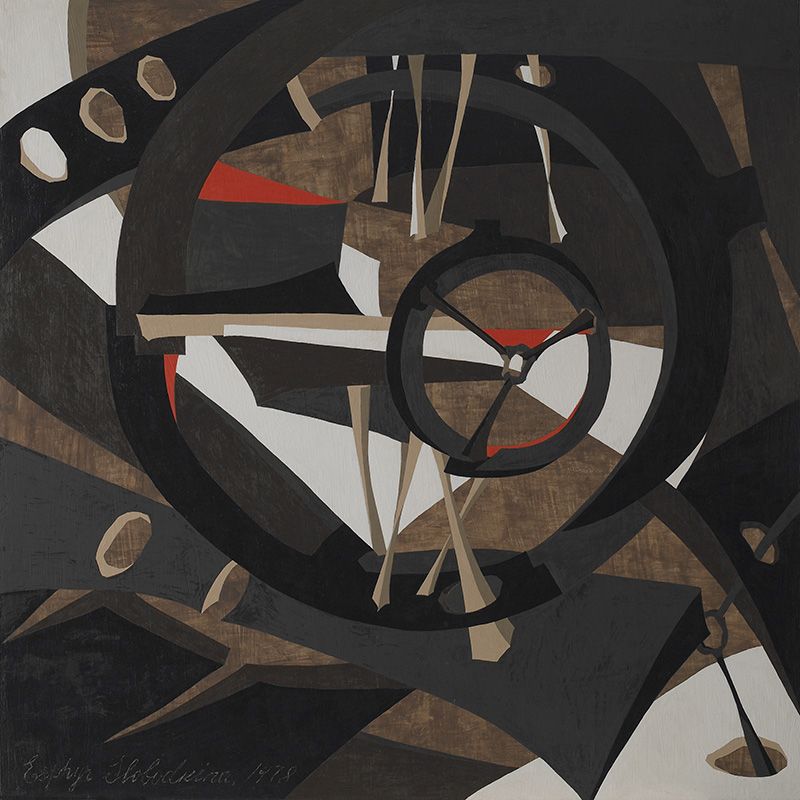Louise Nevelson and Esphyr Slobodkina shared the unwavering conviction that abstraction most authentically expressed the spirit of their times.
While neither artist adhered to any one school of the twentieth-century avant-garde, both assimilated and contributed to developments in Cubism, Surrealism, Constructivism, and assemblage from the beginnings of their careers in the 1930s and thereafter.
Coming of artistic age in New York City during an era dominated by representational art, American Scene painting, and Urban Realism, they were united in their bold commitment to advancing abstraction, even when it was unpopular for emerging and especially women artists.
Despite their mutual engagement with abstraction, however, each artist was motivated by different viewpoints.
Nevelson consistently looked back in time and history for inspiration, as evident in her preoccupation with precolonial civilizations and architectonic forms, recurring references to “ancient” and “antique” subjects, and her nearly lifelong use of salvaged wood—a material she felt embodied “past lives.”
Slobodkina, on the other hand, found fascination in mechanics, industry, and technology, in commercially produced materials that she encountered in her daily life and work, and—as intimated by the title of her 1978 painting—in humankind’s journey into the future.
This essay considers the remarkable distinctions between these two artists, whose divergent approaches to art making—one looking backward to the past and the other looking forward—shaped their work and identities.
As early as the 1930s, Nevelson expressed her attraction to ancient totemic forms in small sculptural works, while Slobodkina’s exploration of modern mechanics found two-dimensional form in reliefs and paintings. Both artists were engaging assemblage techniques in the 1940s, drawing materials and inspiration from the urban environs of Manhattan: Nevelson was compelled to make use of wood salvaged from city demolition sites, while Slobodkina employed commercial materials accessible at her office job.
In the 1950s, both artists addressed concepts of space and time at culminating points in their careers and from characteristically diverse viewpoints: Nevelson conjured themes of an archaic “elsewhere,” while Slobodkina extolled a technological present and future. In their work, abstraction constituted a potent language with the capacity to express complex ideas across human civilization.
My name is Lisa Hayes Williams, and that was an excerpt from my essay, Architectonics of the Ancient and Avant-Garde. To read the full essay, purchase a copy of the exhibition catalog Architects of Being: The Creative Lives of Louise Nevelson and Esphyr Slobodkina.

